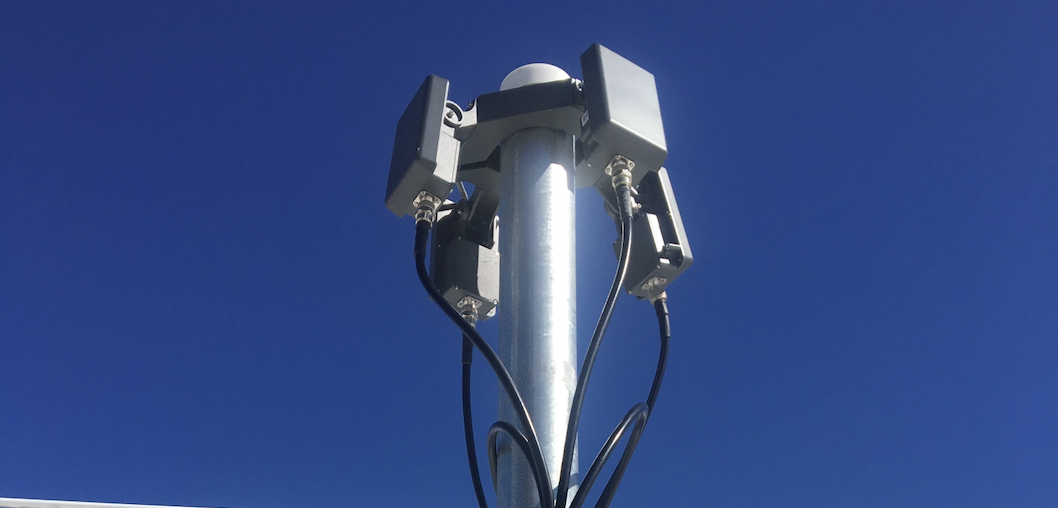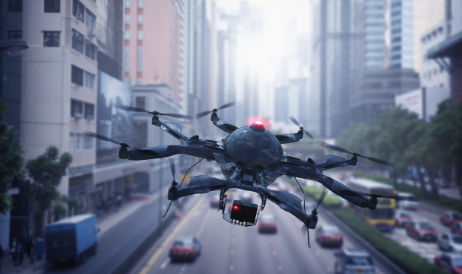At the heart of drone functionality are communication protocols that enable remote piloting, telemetry transmission, and real-time data sharing. However, these same protocols introduce vulnerabilities that can be exploited for unauthorized surveillance, cyberattacks, or even physical threats. Understanding how drones communicate is essential for developing effective detection and countermeasure strategies.
Core Components of Drone Communication
Drones rely on a combination of control signals, navigation data, and telemetry feedback to operate. These components define their ability to function autonomously or under remote control, but they also present potential attack surfaces. Here’s an overview of the key components and their associated vulnerabilities:
Component |
Function |
Key Protocols Used |
Potential Vulnerabilities |
|
Command & Control (C2) |
Transmits pilot instructions to the drone |
2.4 GHz/5.8 GHz Wi-Fi, FHSS, DSSS, LTE, SATCOM |
Signal interception, jamming, protocol spoofing |
|
Telemetry Data |
Provides real-time flight data (position, altitude, speed) |
MAVLink, DJI Lightbridge, LoRa, DroneCAN |
Data injection, signal hijacking |
|
Video Transmission |
Sends live feed to the pilot or external system |
FPV (Analog or Digital), OcuSync, Wi-Fi, 5G LTE |
Man-in-the-middle (MITM) attacks, feed interception |
|
Navigation & GPS |
Enables autonomous navigation and geofencing |
GPS, GLONASS, BeiDou, Galileo |
GNSS spoofing, jamming, denial of service |
|
Payload Data Link |
Transfers sensor and payload data |
4G/5G, SATCOM, proprietary links |
Data exfiltration, interference, encryption bypass |
Key Wireless Protocols Used in Drone Communication
To detect and counter drone threats effectively, it's crucial to understand the wireless protocols they rely on. Below are the primary communication methods used in UAVs and their associated security concerns:
1. 2.4 GHz & 5.8 GHz Radio Control (RC) Signals
These unlicensed ISM bands are widely used for drone control but are also susceptible to interference and hacking.
- Common Modulation Techniques: FHSS (Frequency Hopping Spread Spectrum), DSSS (Direct Sequence Spread Spectrum)
- Security Risks: Vulnerable to signal interception, hijacking, and jamming attacks
2. Wi-Fi-Based Drone Control (802.11 a/b/g/n/ac)
Drones equipped with Wi-Fi control are convenient but pose serious security risks, as they operate on unlicensed 2.4 GHz and 5 GHz bands as regulated by the FCC.
- Common Drones Using Wi-Fi: DJI, Parrot, Autel Robotics
- Security Risks:
-
Man-in-the-middle (MITM) attacks
-
Deauthentication attacks (Wi-Fi jamming)
-
Packet injection for remote takeover
-
3. MAVLink Protocol: Open-Source Telemetry Standard
Used extensively in autonomous UAVs, MAVLink is efficient but has security gaps.
- Security Risks:
-
Unencrypted data exchange (default settings)
-
Susceptible to data injection attacks, allowing unauthorized control
-
4. DJI Lightbridge & OcuSync (Proprietary UAV Communication Systems)
DJI’s proprietary low-latency transmission systems improve signal integrity while making detection more challenging.
- Security Risks:
-
Encrypted telemetry makes interception difficult
-
Adaptive frequency hopping can bypass traditional RF jamming
-
5. 4G/5G LTE & SATCOM-Controlled Drones
Drones using cellular networks present unique detection challenges since they do not emit traditional RF control signals.
- Security Risks:
-
Harder to detect due to lack of RF emissions
-
Cloud-based control allows remote operation from anywhere
-
Emerging Threats in Drone Communication Systems
With the rapid advancement of UAV technology, new security challenges continue to arise. Here are some of the most pressing threats:
1. GNSS Spoofing & GPS Jamming
-
Attackers can transmit counterfeit GPS signals, tricking drones into miscalculating their location.
-
Impact: UAVs can be forced to change flight paths or even crash.
-
Countermeasure: Multi-constellation GNSS receivers and inertial navigation backups.
2. Signal Hijacking & Remote Takeover Attacks
-
Weak encryption allows attackers to inject false commands into drone control links.
-
Countermeasure: Strong encryption (e.g., AES-256) and authentication-based command inputs.
3. Video Feed Interception (FPV Spoofing)
-
Exploiting vulnerabilities in analog FPV systems allows attackers to eavesdrop or inject fake video feeds.
-
Countermeasure: End-to-end encrypted FPV transmission (e.g., OcuSync).
4. Network-Based Attacks on Wi-Fi-Controlled Drones
-
Wi-Fi-controlled drones are highly susceptible to deauthentication and MITM attacks.
-
Countermeasure: WPA3 encryption, SSID broadcasting disablement, and dynamic IP allocation.
Strategies for Securing Drone Communication Networks
To mitigate these risks, a multi-layered approach to security is essential:
1. RF Spectrum Monitoring
-
Passive RF monitoring detects UAV emissions within the 300 MHz – 6 GHz range.
-
Helps identify C2 links, telemetry beacons, and FPV signals in real time.
2. Encrypted Telemetry & Secure Authentication
-
Implementing secure command authentication prevents unauthorized access.
-
End-to-end encryption minimizes hijacking risks.
3. Deep Packet Inspection for Networked UAVs
-
Cellular-connected drones can be identified via traffic analysis.
-
Detects suspicious drone activity over LTE networks.
4. Adaptive Counter-UAS Technologies
-
AI-driven RF anomaly detection classifies drone activity.
-
Multi-sensor fusion (RF, radar, EO/IR cameras) enhances detection accuracy.
Final Thoughts & Next Steps
The security landscape for drone communication is evolving rapidly. As drones become more autonomous and reliant on networked systems, security teams must stay ahead of emerging threats with advanced detection and mitigation strategies.
Want to learn more about the security risks drones pose? Get in touch with an AirSight expert for a full demo of our advanced drone detection and countermeasure solutions.

%20(1).webp)









